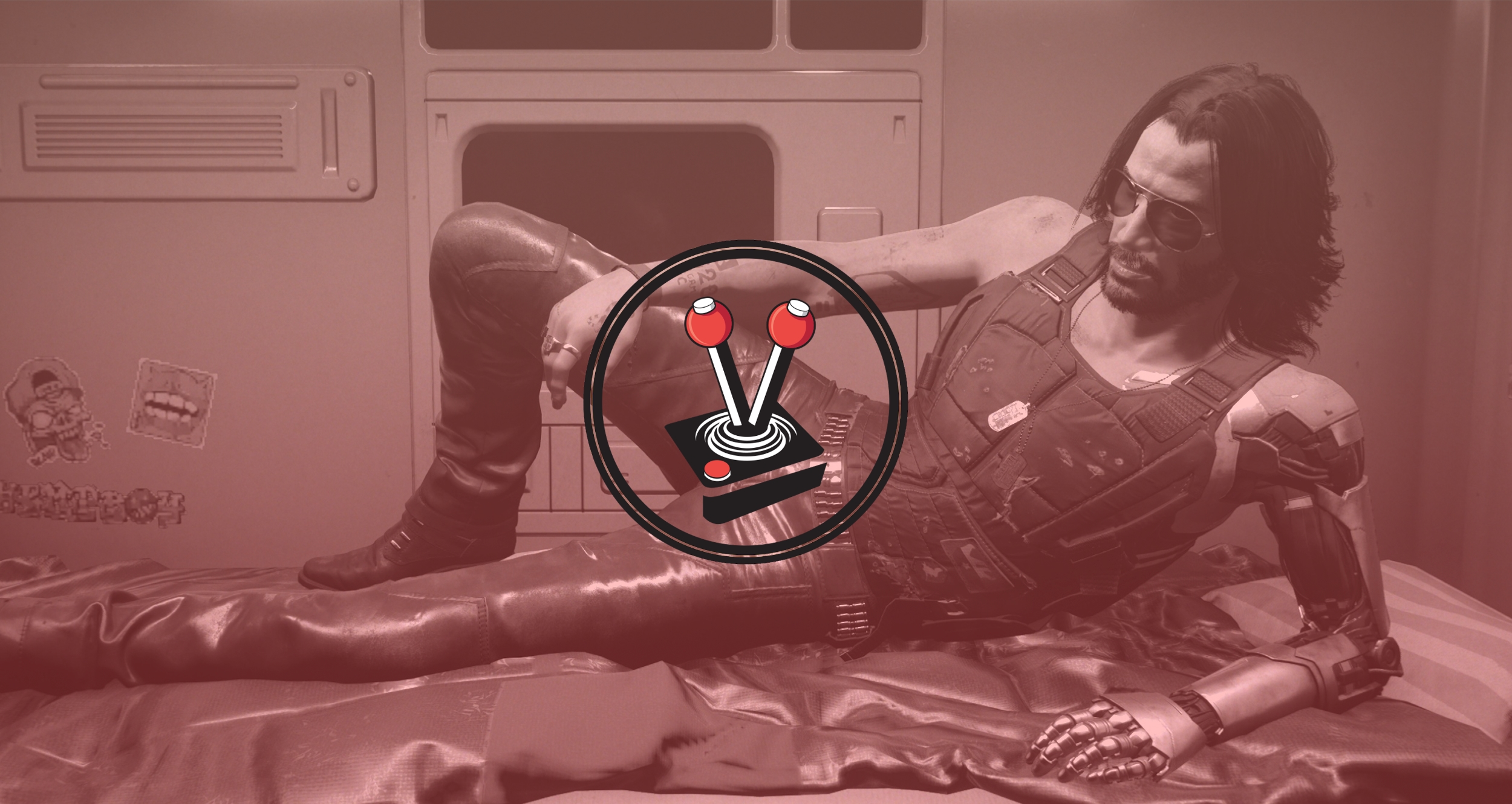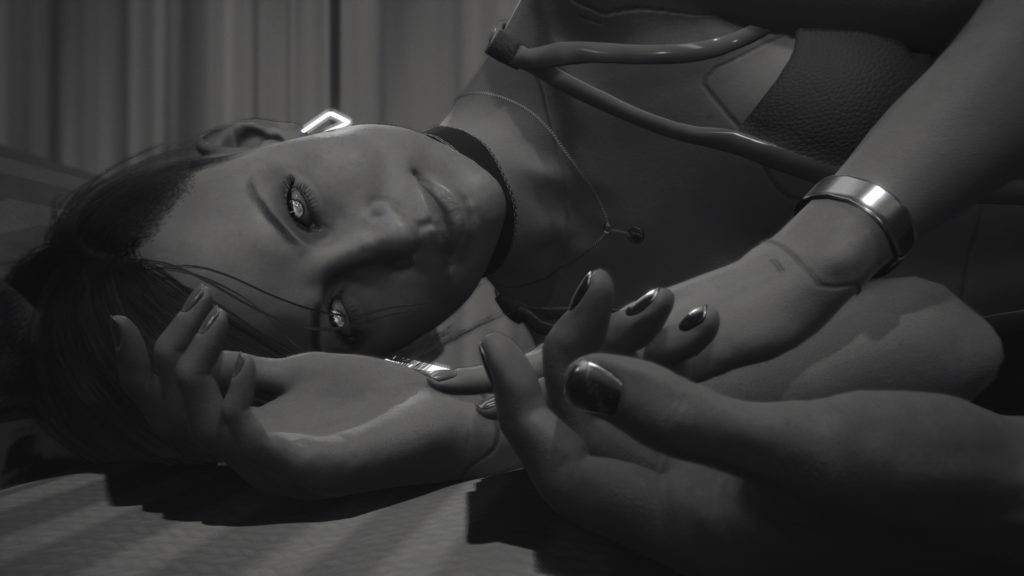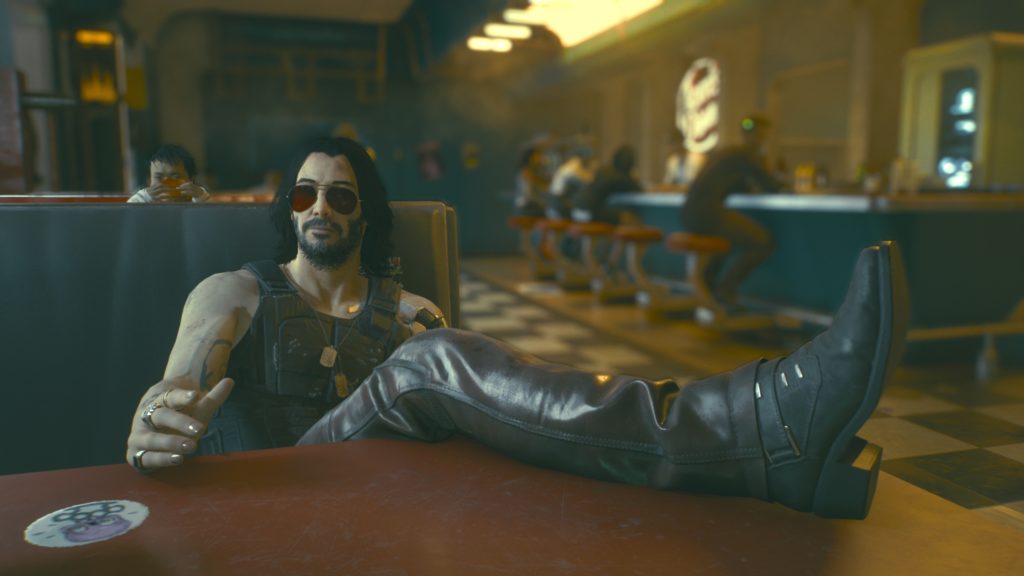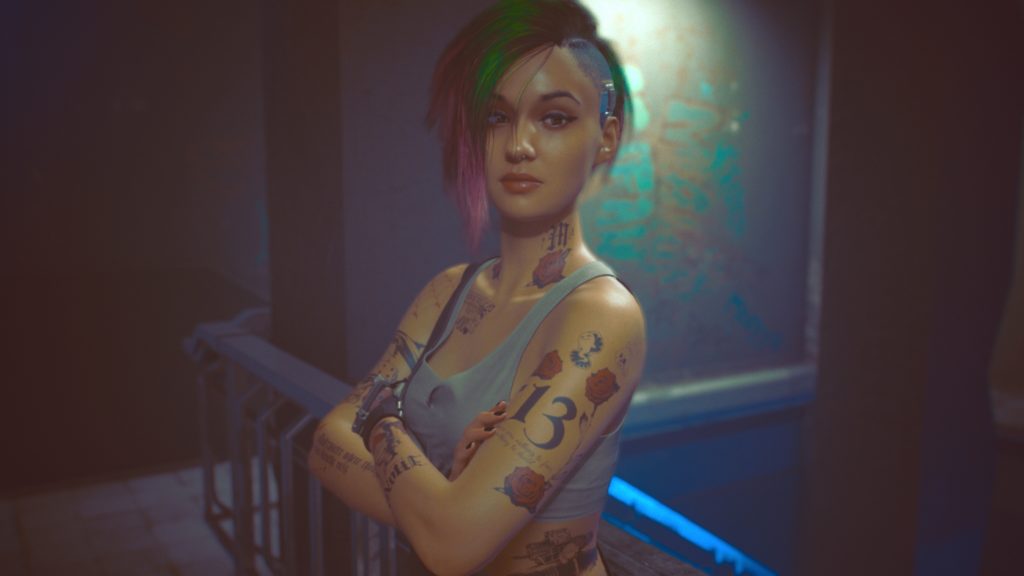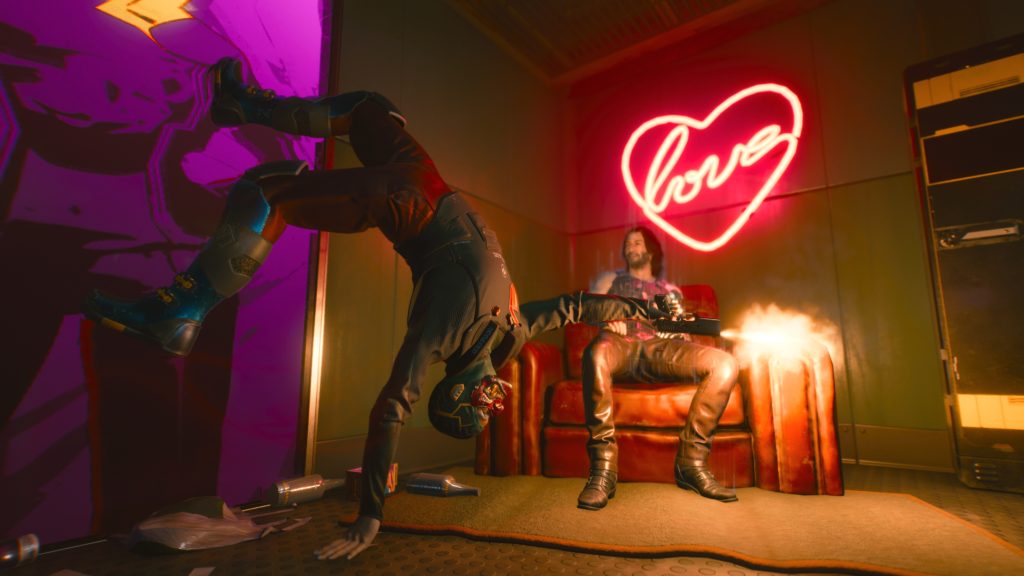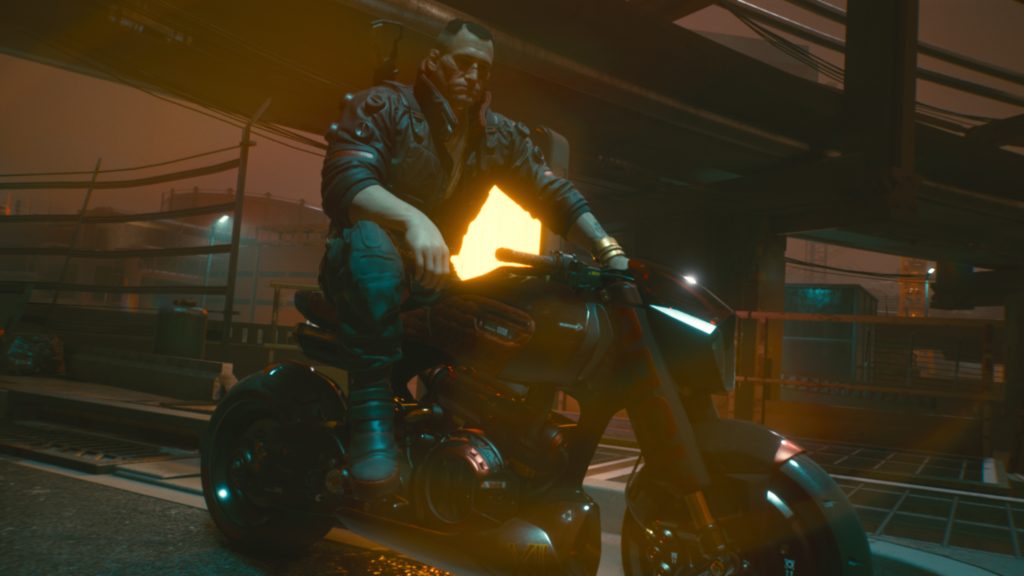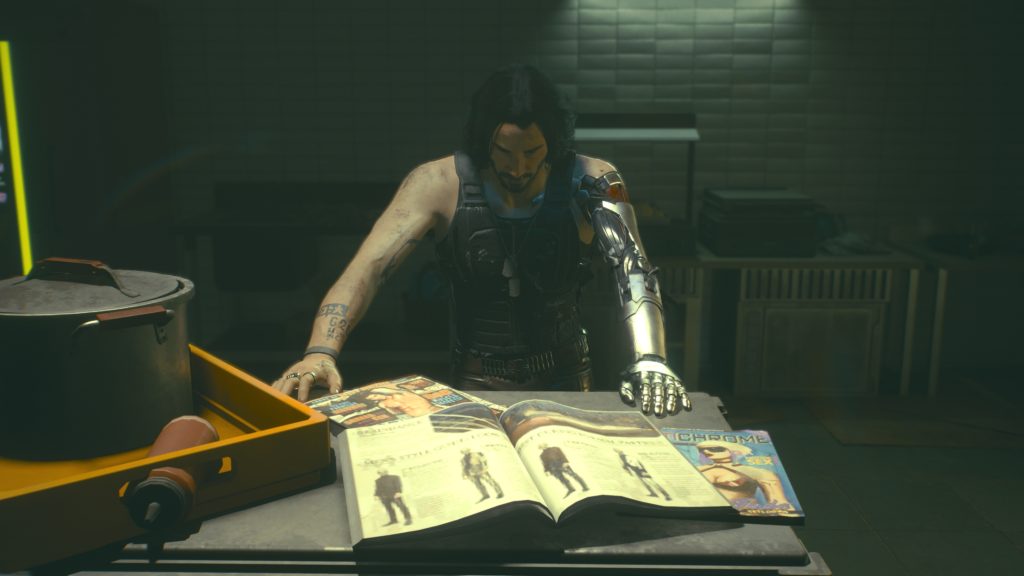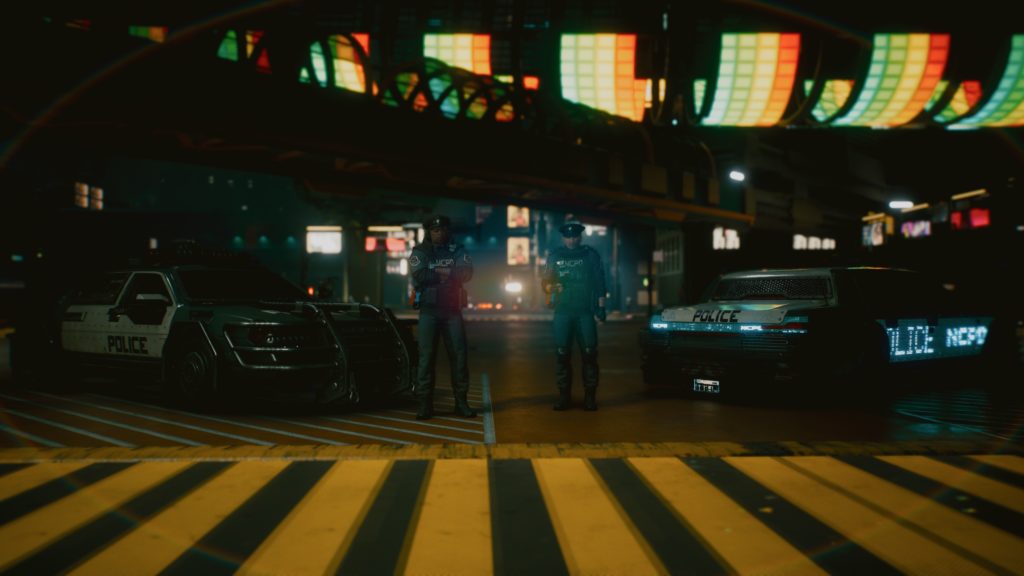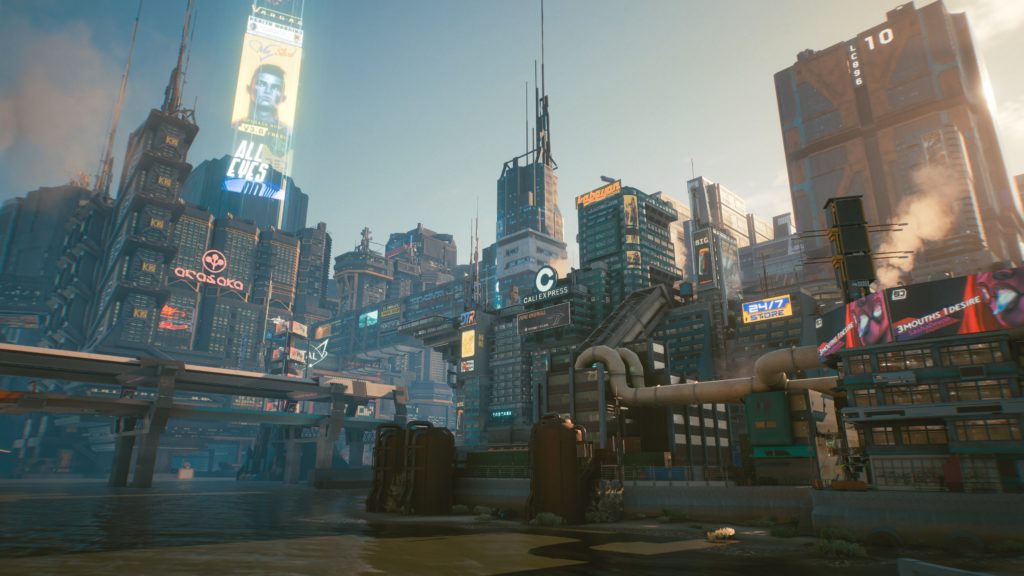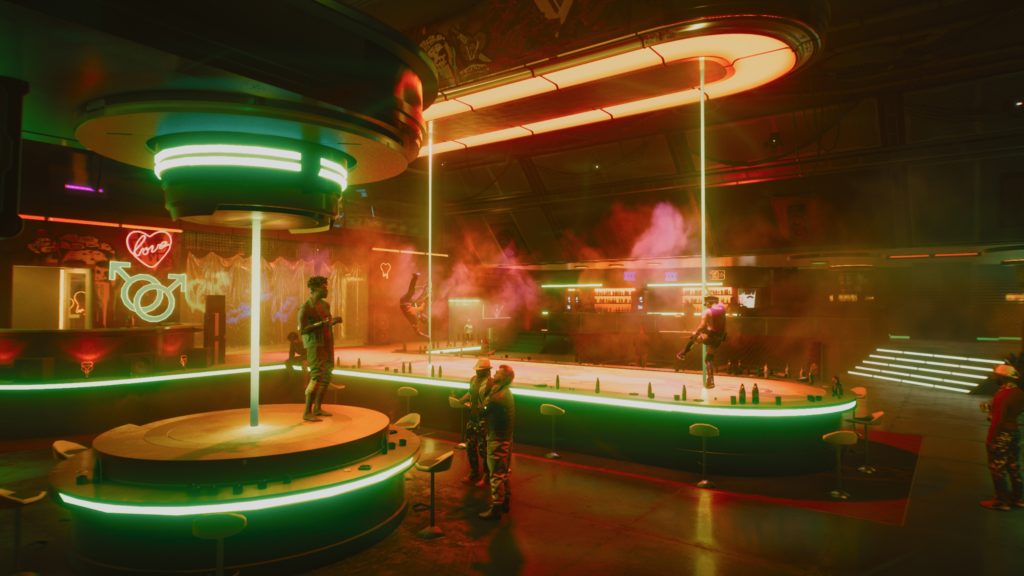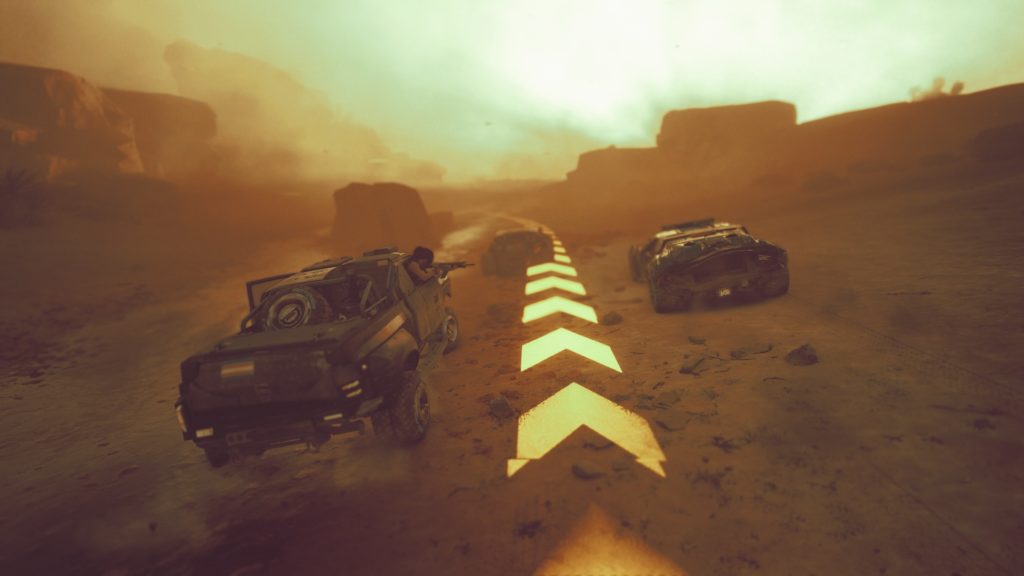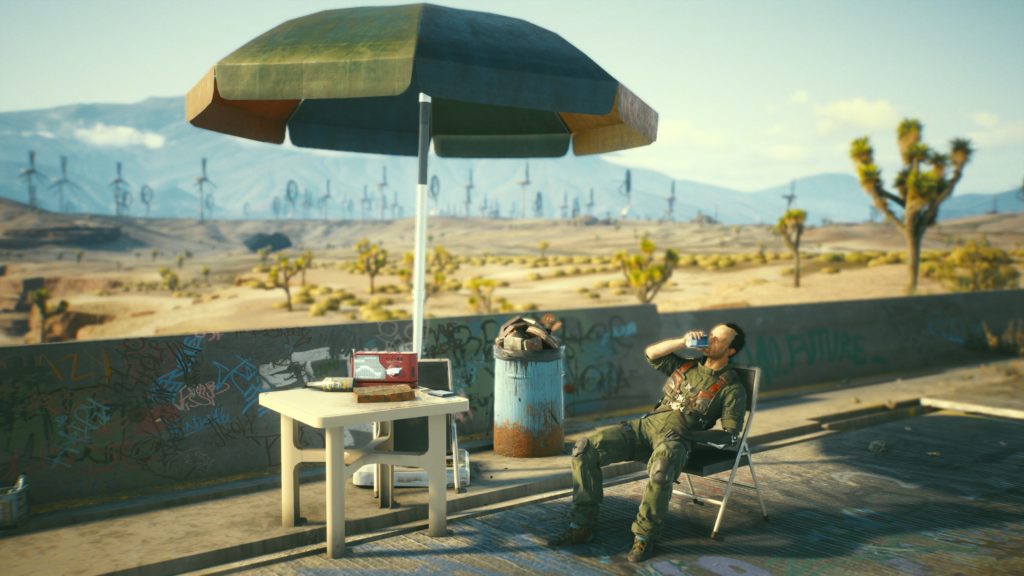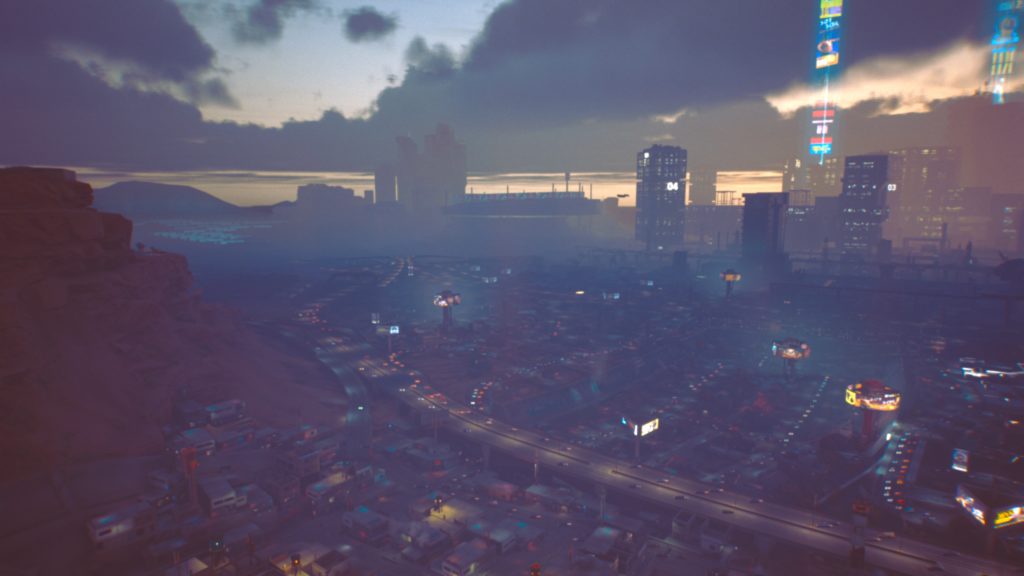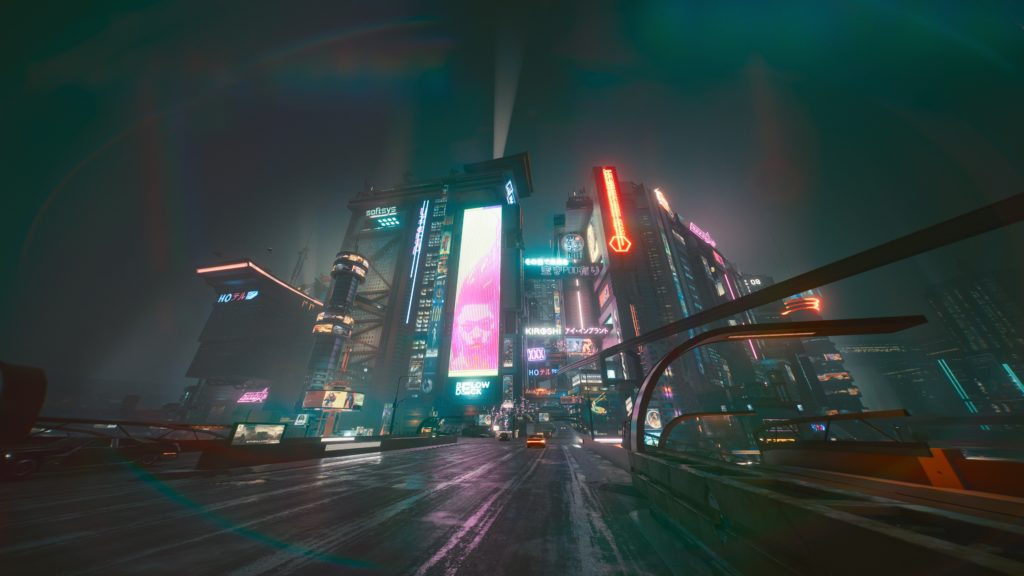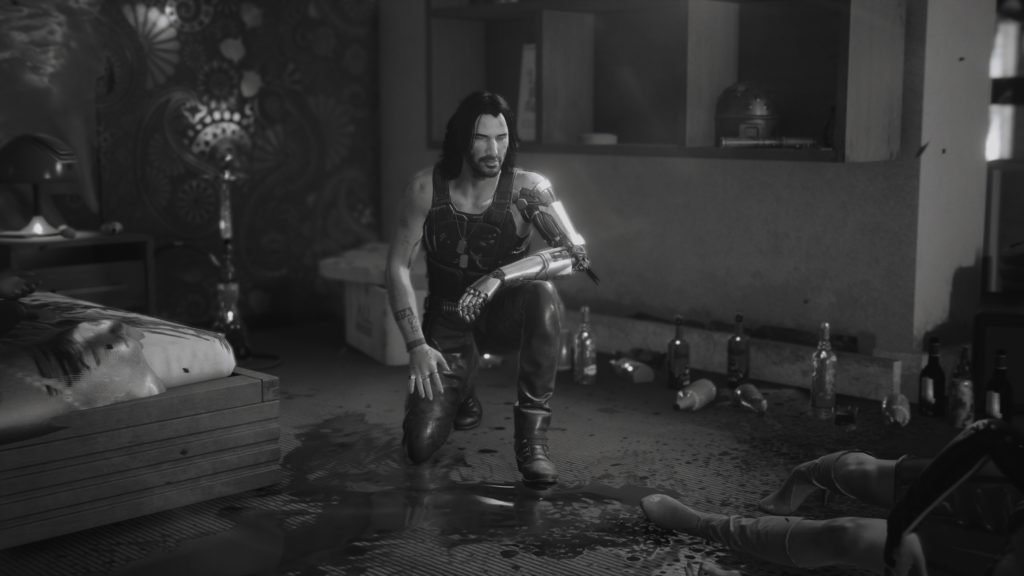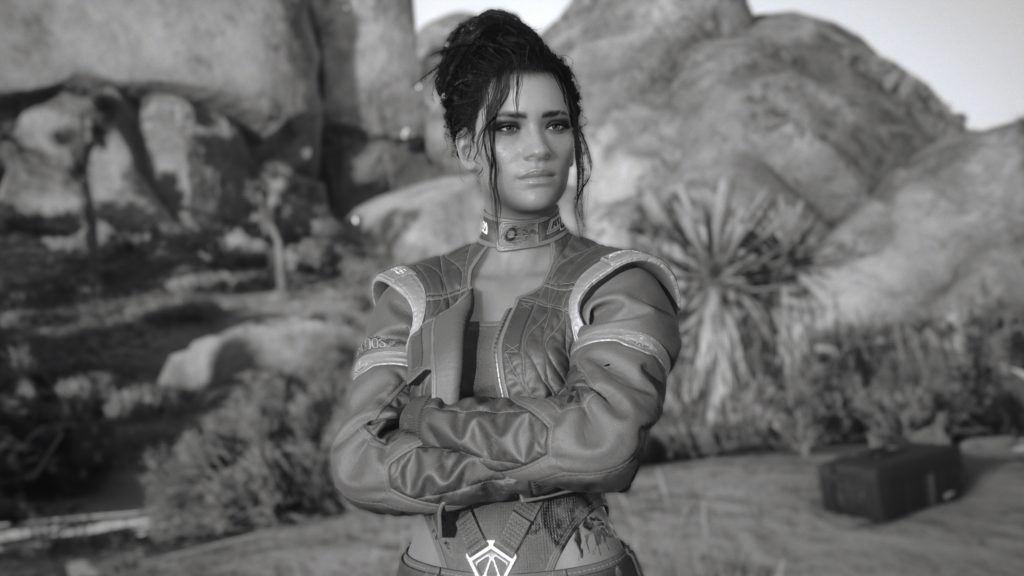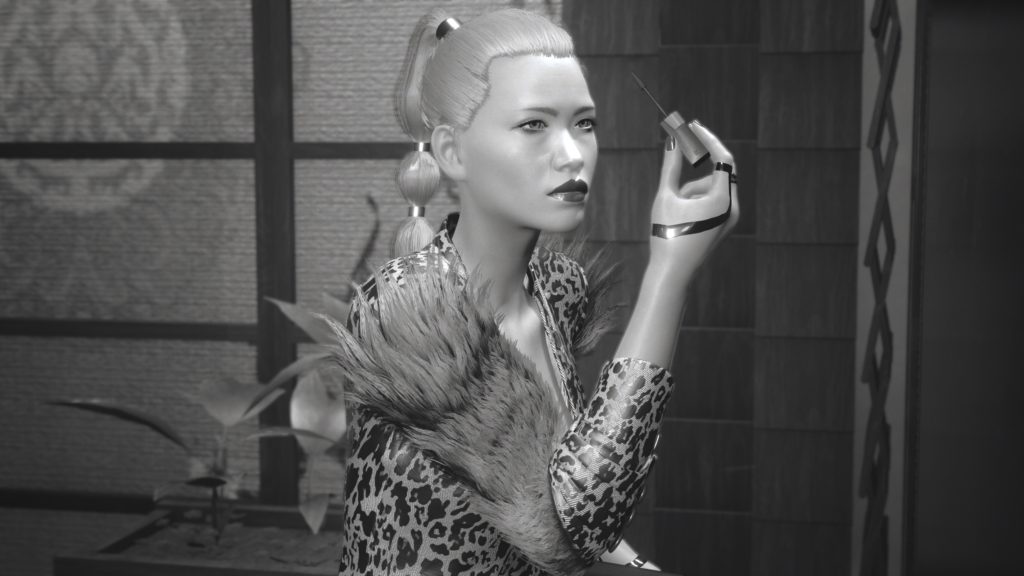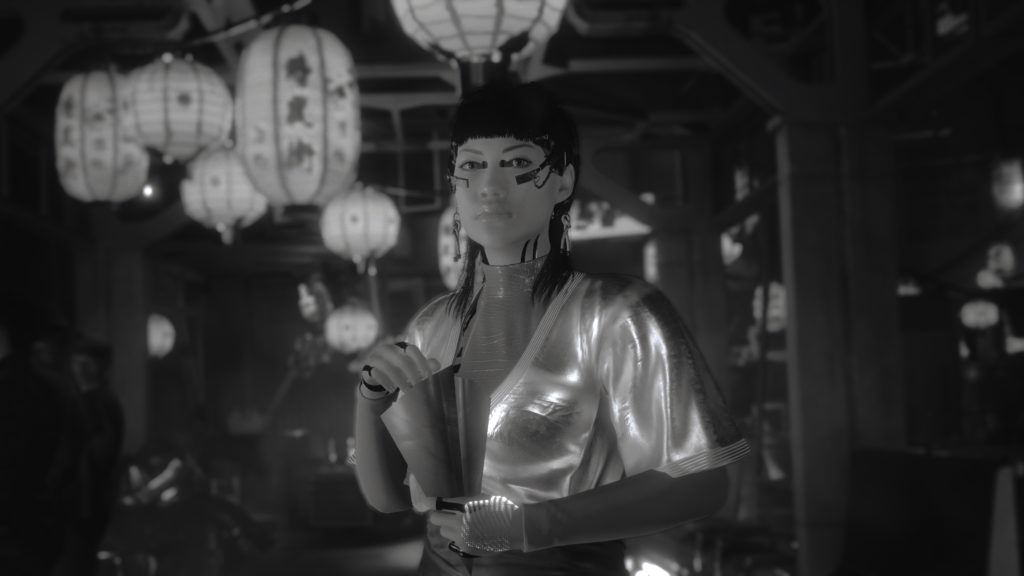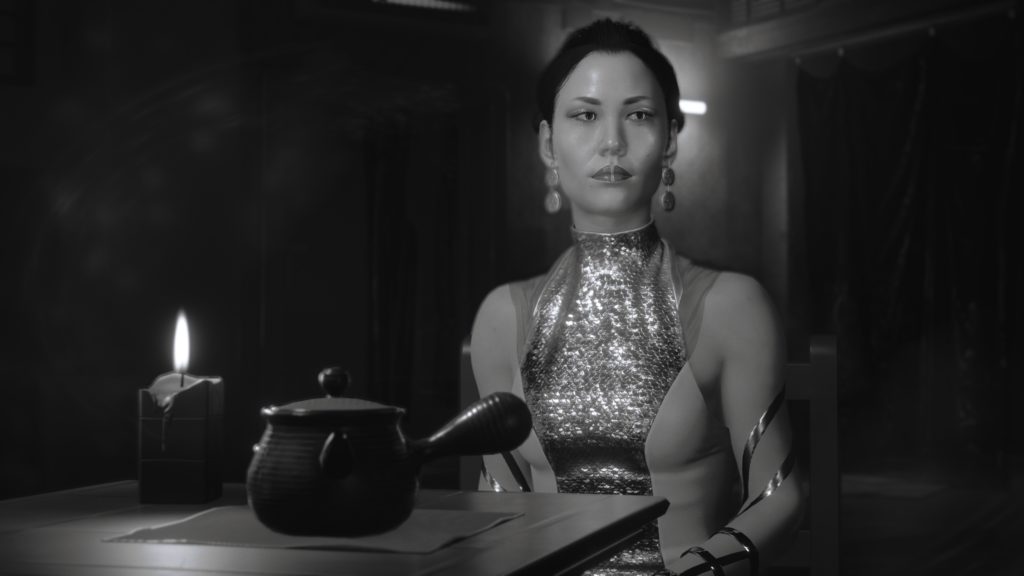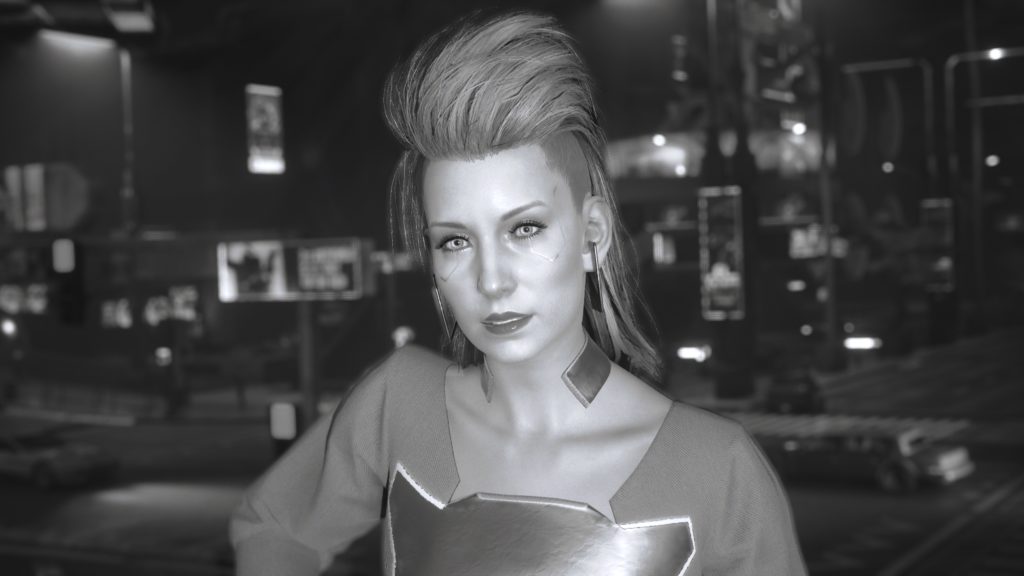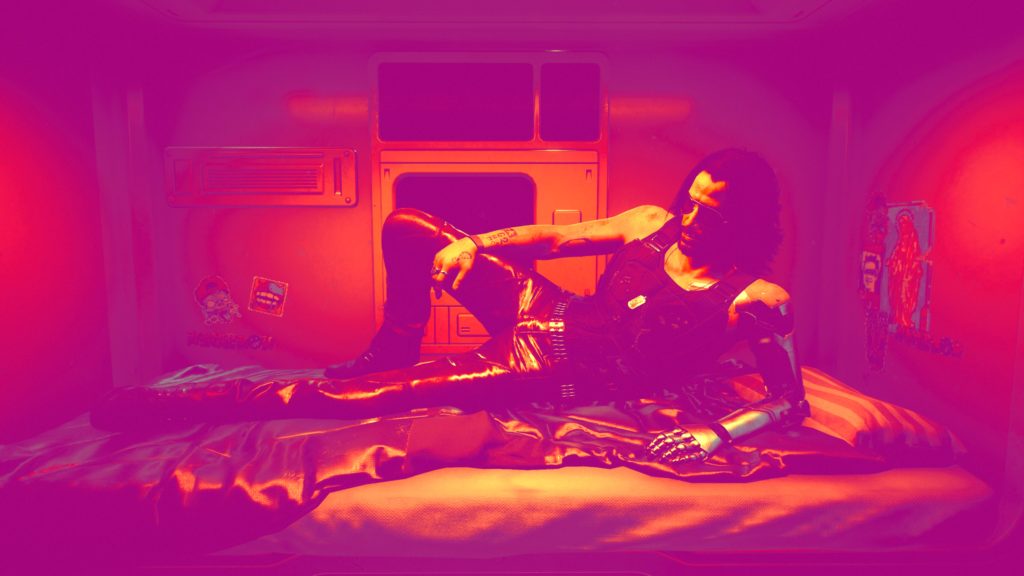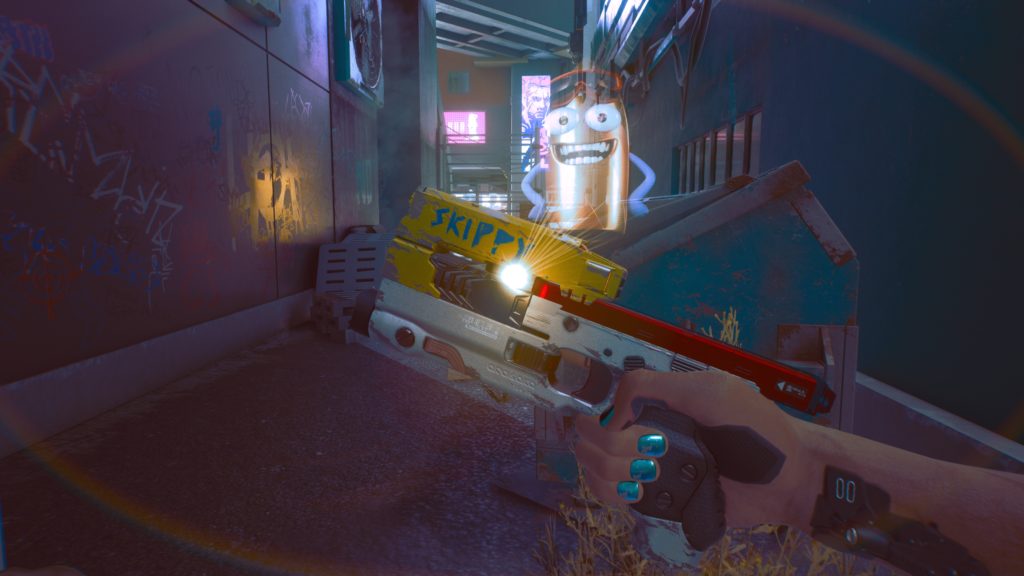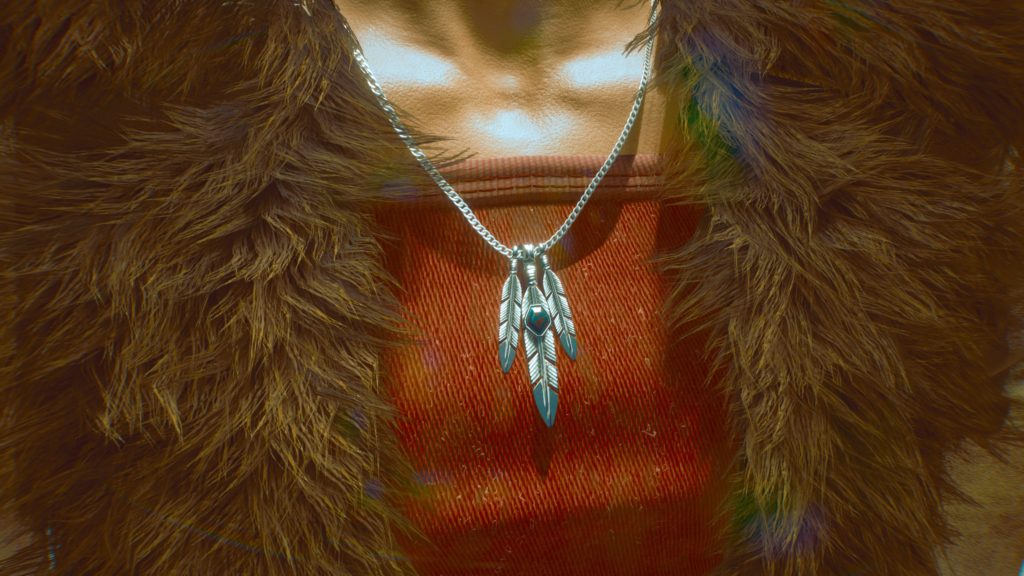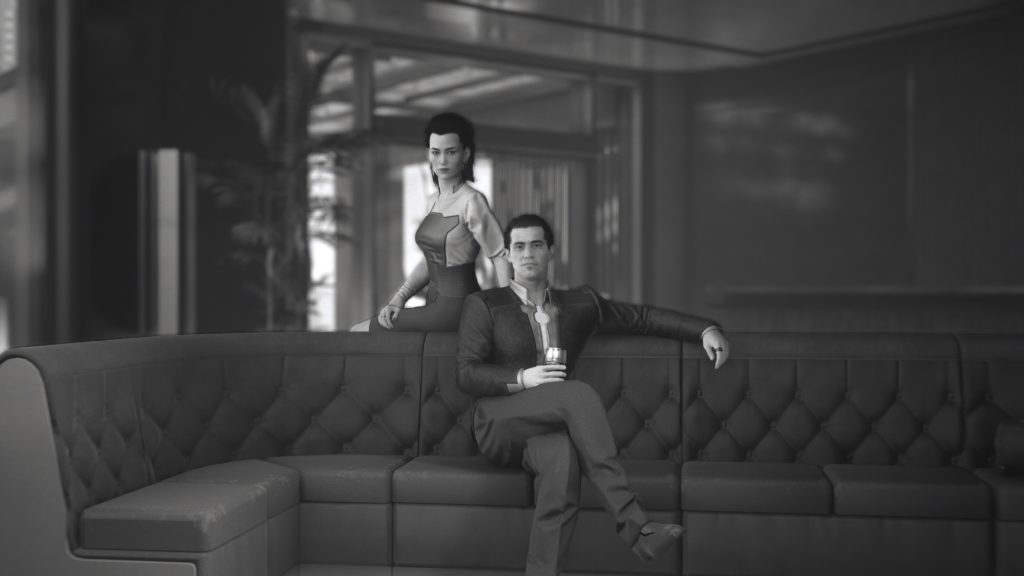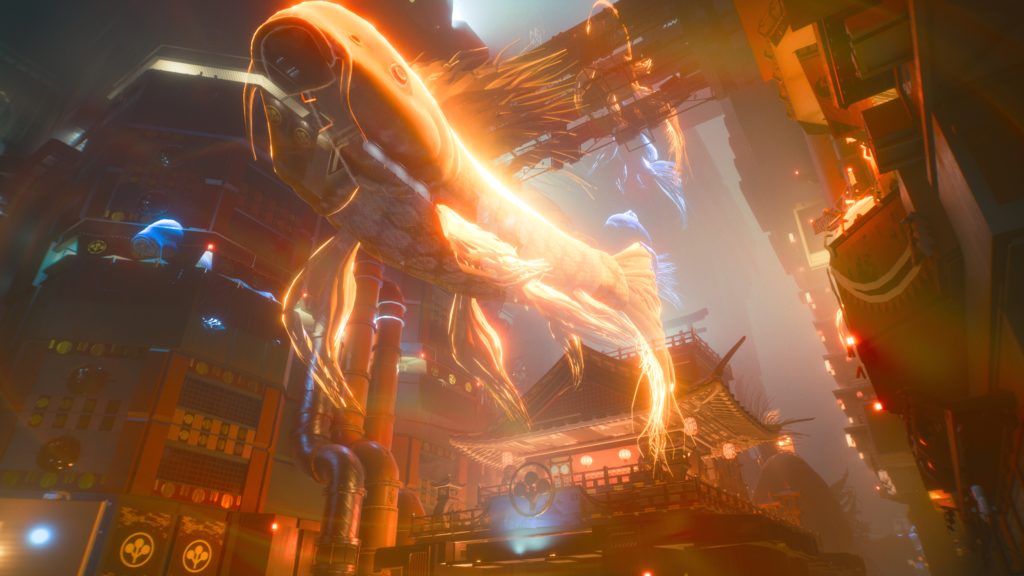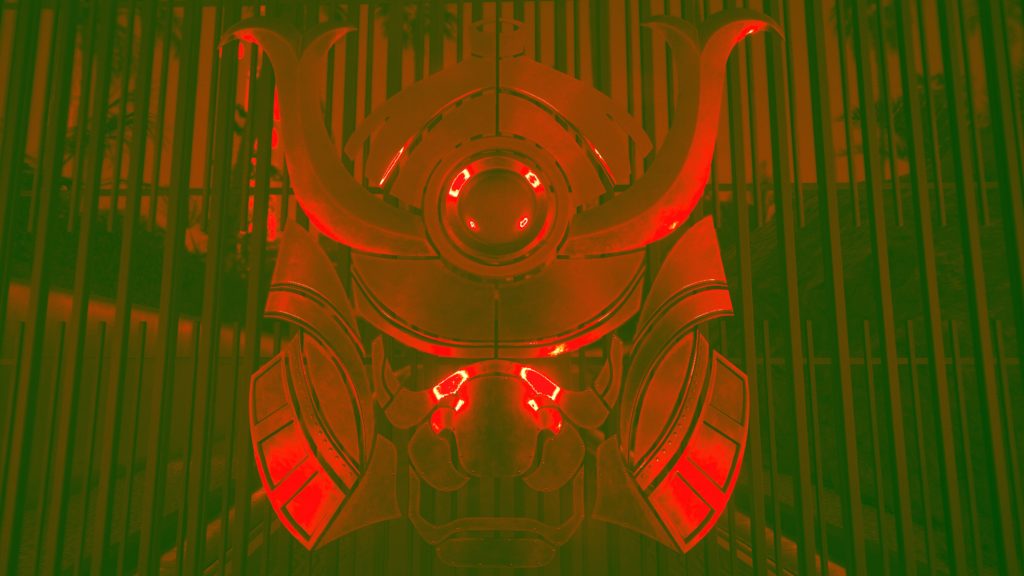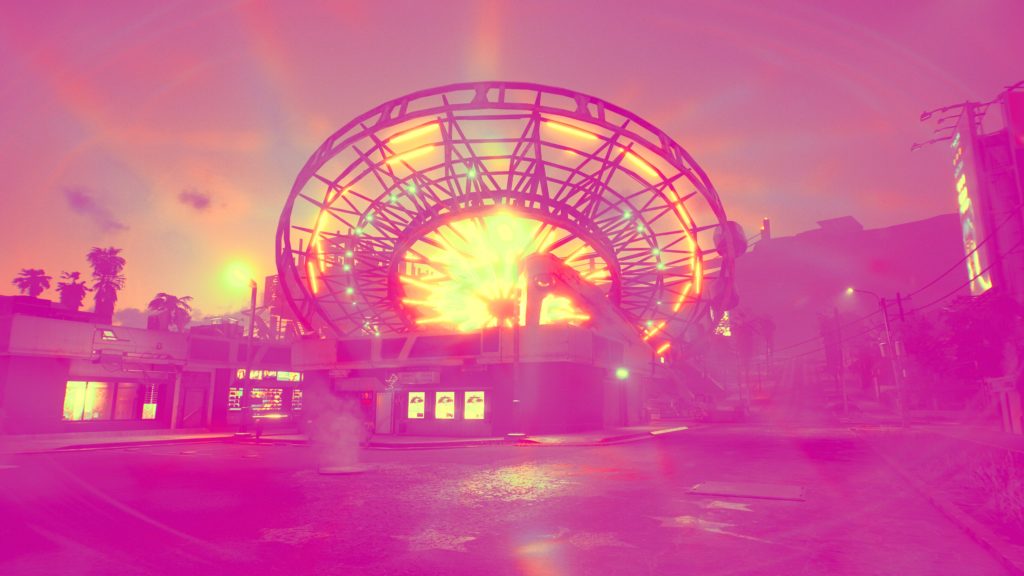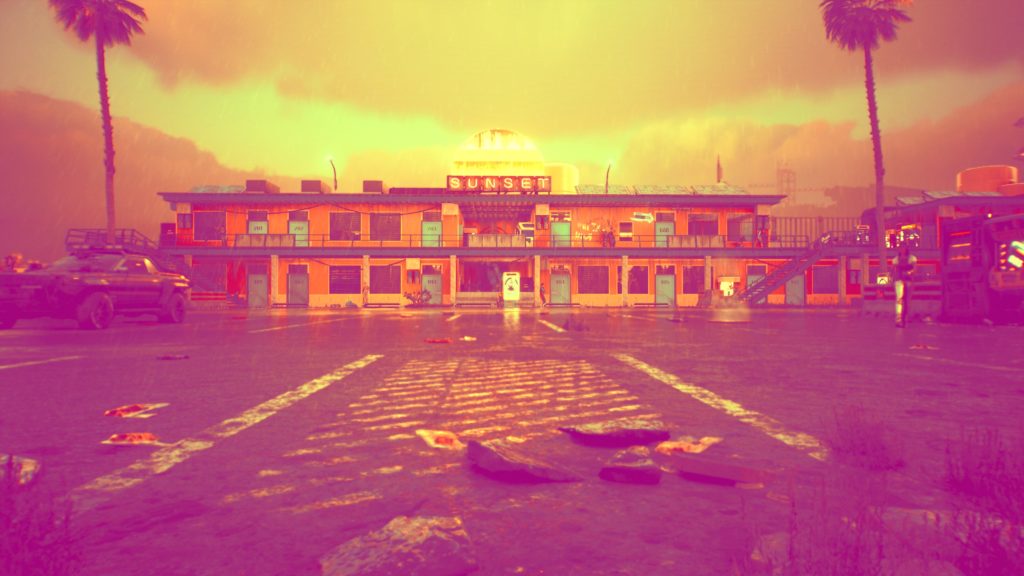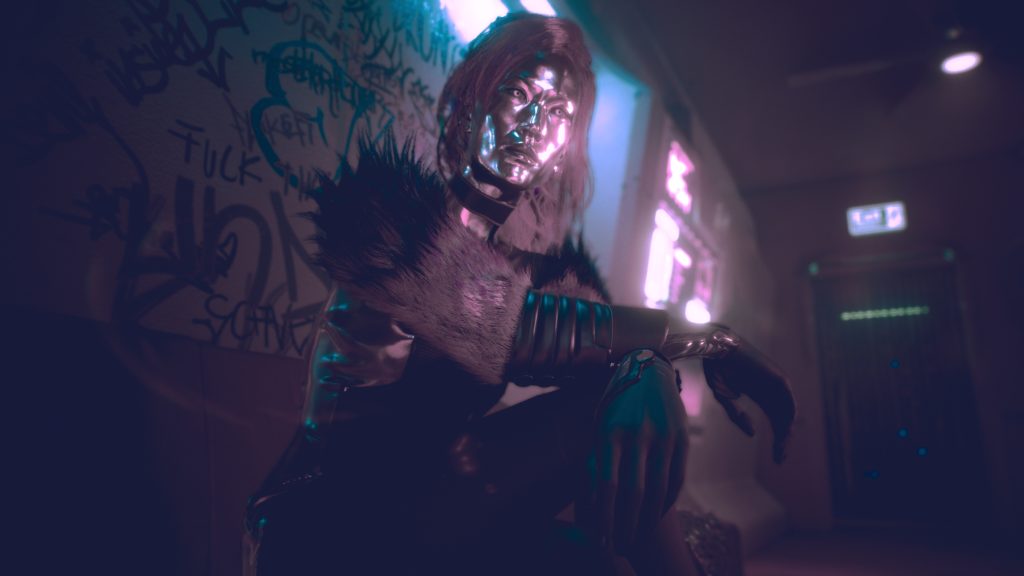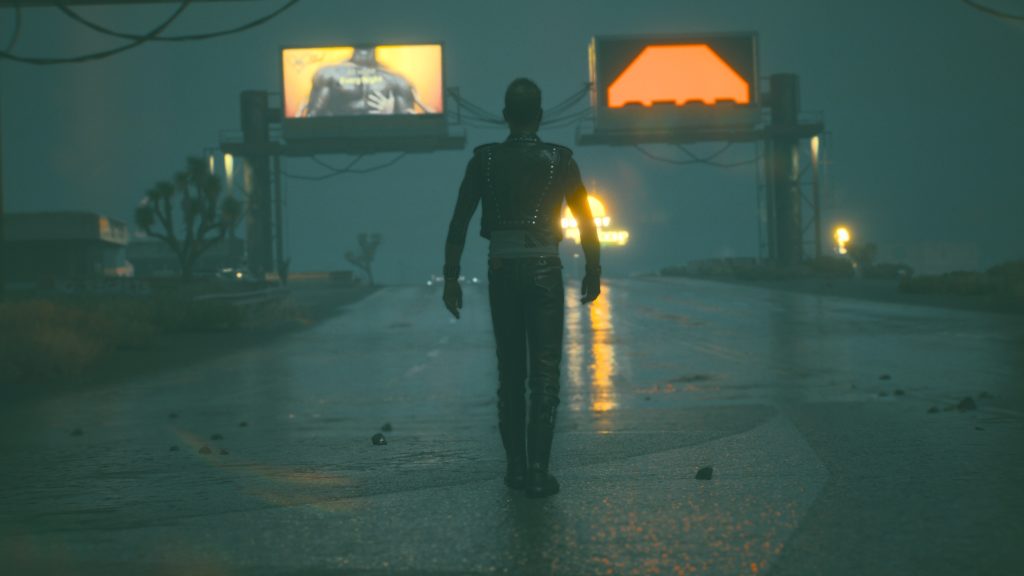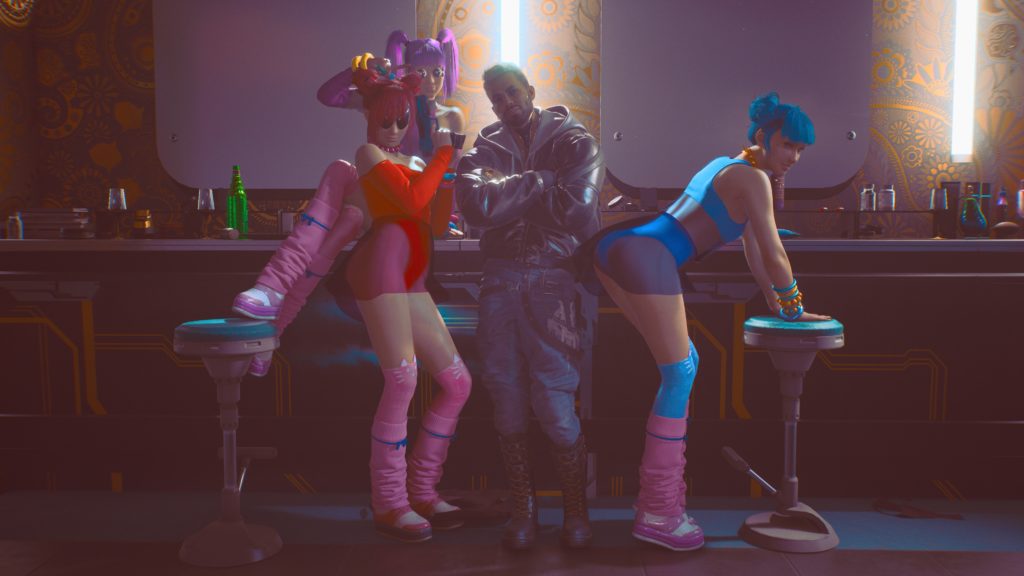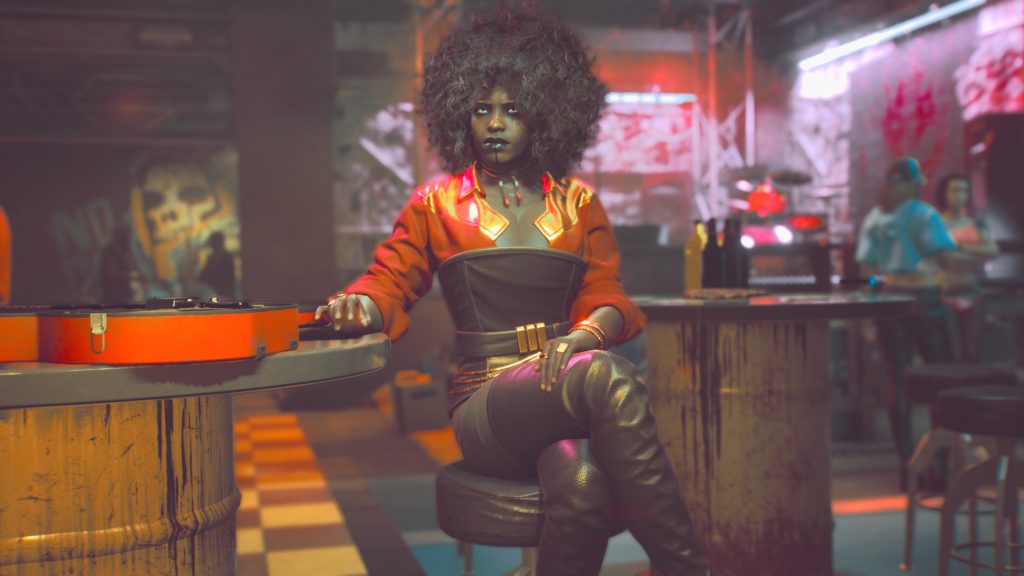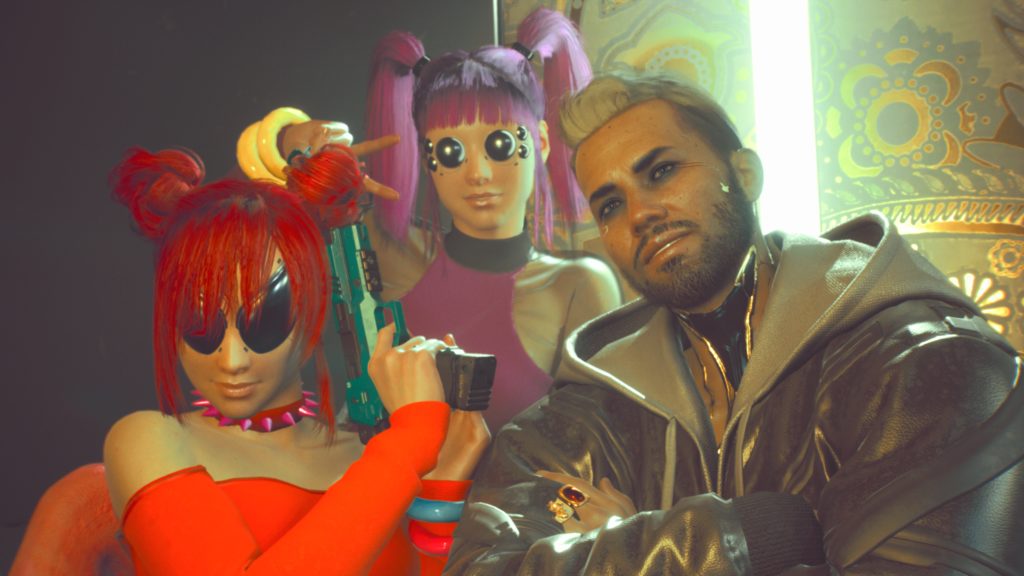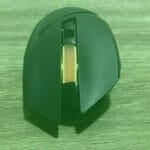There is certainly something to be said about a game that was announced at the start of a console generation, only for it to be released at the very end. A game like this is a rare occurrence. So many titles are recycled annually with little or no additions to the gameplay and aesthetics; whilst others see larger additions and vastly improved gameplay – a lucky few even get the sequel treatment. If they do not, then at least the single adventure should be good enough to last over 100 hours of enjoyment. Thankfully, CD Projekt Red delivers some exceptional results with Cyberpunk 2077; despite a few caveats here and there.
From the moment the game begins, it is evident Cyberpunk 2077 has some growing pains. There are crystal clear signs the studio ventured into territories they have very little experience with. As such, the game is far from perfect. Thankfully, the developers are not known to back down from a challenge, and Mike Pondsmith’s beautifully dark proto-dystopian world of Cyberpunk 2020 is the perfect place to start building a foundation.
Cyberpunk 2077 takes place fifty years in the future from where the tabletop role-playing game ends. It brings characters like “The Rockerboy” and “The Solo” into a wholly new context along with clear references and inspiration from other dystopian classics. The fifty year gap essentially makes the game more of a “loosely based on” versus being an actual adaptation. However, the game’s story is apparently canon therefore making the title something of an official sequel to the pen-and-paper boardgame – one that stands on its own merit as an excellent entry point for a new gaming franchise.
As players start up the game and their character opens their eyes and either: rips a badge from their jacket (Nomad); throws up into a sink because of corporate stress (Corpo); or finds themselves in a bar filled with gangers (Street Kid), one thing is certain – they are in it for the long haul. V, who can be played as a male or a female in Cyberpunk 2077, is a completely custom character designed right before entering the game, and thus Night City, for the first time. The several hour long prologue is quite good, and serves as a great narrative foundation for the game’s overarching story. It is also the only real part of the game influenced by the three initial options from which to base V’s background. With that said, whatever origin you pick for V will have some consequences down the road. It will also affect some dialogue choices, and come with its own unique quest or two as gamers progress through the engaging narrative.
Creating a custom character is a nice touch for an open world dystopian cyberpunk adventure like this. There are many options to choose from, including the hyped up choice of penis, penis size, and/or vagina; body types, player voices, and even a decent amount of hair, markings, and more. While the amount of options are not groundbreaking, there are enough to keep people from feeling as if their V is not unique amongst their friends. The options are also quite fitting for the setting: normal eyes can be chosen, but there are also all sorts of cybernetic and/or custom eyes with fancy irises (or none at all), as well as other superficial facial and body augments. Tattoo options are present too, and although they look great, it would have been nice to have more options to play with. Interestingly, most of the additions are merely cosmetic and have no real impact on gameplay – with the exception of some romance storylines that are locked behind the character’s selected gender (a rather strange choice). Another important and somewhat disappointing note, is how V’s appearance and characteristics in the character creator cannot be customised again once the game begins – clothing and some body modifications aside.
After this, the game throws players into a wild ride that injects them into the world of Cyberpunk and its dark undertones. During the prologue, players are introduced to a few key characters before the world slowly opens up and seemingly hundreds of key characters make their way into V’s little black book. Interestingly, the first Act of the game is also the shortest, similar to the prologue. While short, however, players can literally run rampant for twenty hours or more before getting to the end of just the prologue, and actually seeing the title screen! I adore this aspect, and it brings back fond memories of Dragon Age: Inquisition and its absolutely incredible first act – which also ends with the game’s title screen. This is how gamers can tell they are in for at least fifty more hours of enjoyment.
From humble beginnings in V’s apartment, to becoming a boxing champ or the greatest cab collector Night City has ever seen; it is easy to get lost in everything on offer. This is thanks in large part to the wonderful way CD Projekt RED have written the story and the characters surrounding V. From best bud Jackie to hacker extraordinaire Judy, through to Doll Evelyn and dastardly Dax; and even the “Rockerboy” Johnny Silverhand and pensive Sobaru Arasaka, and so many more highly memorable characters; it is clear the studio worked long and hard to make the characters as authentic as possible. They even went as far as to implement groundbreaking Artificial Intelligence for mouth and facial animation into the game! In this sense, there are countless examples of the beautiful and nuanced effort the studio has put in to creating unforgettable characters, locations and experiences. From Panam putting her feet up over V’s lap, or how Dex’s bodyguard pushes you aside to see if V was followed; through to the way Judy’s body language is wholly different while Evelyn is in the room, and how her body tells more of a story than her words do… it all comes together beautifully to provide something truly special.
Unfortunately, as great as many of the main characters and fulfilling side missions and their characters can be; the veil of immersion is parted by all of the seemingly irrelevant non-playable characters who populate Night City. Cyberpunk 2077 is an open world game populated with NPCs who seemingly just go nowhere. At first glance, they seem alive. Upon closer inspection, it is clear how most endlessly loop around, often pulling a 180 and walking the exact opposite way. Many of these NPCs often look the same too, and all of them are subject to what seems to be one of only three walking animations. For a game releasing at the end of a decade, with titles like Read Dead Redemption 2 paving the way for super realistic NPC characters; one cannot help but be disappointed in this regard. I will concede that the amount of NPCs in this game is a breath of fresh air compared to some other open world games, but I do dislike how robotic it all feels. It is especially odd given how CD Projekt Red has already proven they can do decent NPCs via The Witcher 3. With that said, other games (such as Watch Dogs) were also just as rough around the edges. Thankfully, their sequels improved open-world NPCs tenfold, and it is why I am almost certain the inevitable sequel to Cyberpunk will also feature wholly improved NPCs (if not a patch down the road). Despite their robotic nature, the number of NPC’s does, at least, allow Night City to feel like a densely packed locale that is lived in, regardless of how unintelligent or similar the characters may seem when scrutinised.
Complementing the densely packed city, and in direct contrast to the NPCs, the world building in Cyberpunk 2077 is extremely well done. In Night City, the streets are filled with cars hooting at one-another, huge neon billboards light up the skies at night, and the effects of capitalism are clear for all to see with gaudy and, at times, outright nasty ads all over the place. There are also a variety of conversations happening at any one time which, in my experience, seldom ever loop. This suggests a level of detail where NPCs, while commonplace, are still unique objects in the world. This is an especially nice thing to see compared to Watch Dogs Legion’s NPCs who all loop the same dialogue (depending on skin colour and occupation) once you are ten or more hours in. There are also countless Easter eggs to find and enjoy (like adopting a cat) that really allow Night City, and the world of Cyberpunk 2077, to feel outstandingly immersive and alive.
Fortunately V is a great protagonist who allows you to experience the world through their eyes. I had my reservations about Male V and his respective voice actor, but I am glad that I finally did go with him. The depth he is willing to go with his voice acting and the normalcy he delivers some lines with is great to hear. Despite this, dialogue is one of the weaker aspects of the game.
On the whole, the dialogue choices are great and I like how the game will contextually list the appropriate characters and/or objects in the dialogue box. It is also nice to see the contextual animations and relevant actions pop up when it is least expected. However, the biggest issue I have with the dialogue prompts is how they will have a short three or four word sentence for what could potentially be an entire five minute speech that V will belt out. Worse still, the dialogue also features zero context or emotional hints. There is nothing more annoying than putting your partner on full blast when you thought the lines would be delivered sympathetically. Also, not being able to close off dialogue with NPCs in meaningful ways can be super weird and somewhat immersion breaking.
Some dialogue choices will also open up depending on your choices at character creation, or how many points you put into certain stats. These choices will often help V get out of tight scenarios, or get around combat altogether. Sometimes it may even open up entirely different branches for quests. This is a nice way to showcase how much stats really do matter in the game, beyond just hacking, sleuthing about, or shooting the bad guys. The relevant stats are called Body, Intelligence, Technical Ability, Reflexes, and Cool. Together, these dictate how all the math surrounding V’s overall RPG prowess works – from how large their health pool is, to how fast their stamina runs out. Despite what the game may look like, it is much closer to Knights of the Old Republic in gameplay than anything else, and it is all the better for it.
Beyond stats and dialogue, Cyberpunk 2077 also features great gunplay. While having decent supporting stats will compound how well V does in a gunfight, there are other ways to go about firefights. As you might expect, a high level in handguns will not necessarily do anything for sniper rifles or light machine guns. This means players should keep an eye out for these kinds of differences in weapons and learn not to rely on the big number with the DPS symbol next to it as the sole means of figuring out damage numbers.
With that said, stats are not the only governing factors either. V can have status effects on him at all times. Most of these come either from auxiliary effects given by certain power ups or are rewarded through stats. Others, however, can come from medication and/or food and drink. Playing at higher difficulties or against higher levelled enemies will sometimes incite a massive need for additional supplements. There are also different kinds of experience that V will rack up with time. The primary experience is split into two: Experience and Street Cred. The former is earned through doing things – all things. Hacking, combat, and completing quests will earn V some Experience. Street Cred, on the other hand, is earned by completing jobs and gigs for fixers, helping people out in the world, and completing NCPD requests. Of the two, Street Cred dictates the largest amount of cyberware V can install, while Experience dictates what stats you can level up for your V to wear said cyberware.
There is also an armour rating, which honestly felt rather useless to me. Gear is tiered from common and uncommon through to Epic, denoted by coloured tabs. While Epic gear is the strongest and often features the most armour, what makes more of an impact is how many modification slots the gear has. Given how little the armour rating seems to matter, I went through most of my game with a single set of gear (since I looked lush) and just upgraded it every so often. Armour rating not mattering much is not the only reason I opted for the better looking digs most of the time, however. The world of Cyberpunk 2077, as well as the very nature of the game, seems to put an incredibly large emphasis on how good something looks. It is strange then, how some of the best armour can sometimes come from a paper bag and a pair of plastic chinos. The assumption is how most of the clothing stats are randomised when found, so here is hoping CD Projekt Red will help make better looking clothes a tad more effective than others in a future patch. Until then, V might have to simply accept being the last born hand-me-down child.
One of the more unique elements of Cyberpunk 2077‘s gameplay is in the form of Quick Hacking. It is a gameplay mechanic more suited to the stealthy players out there. By implementing quickhacks and leveling the appropriate stats, you can turn your V into a Netrunning menace who can melt enemy brains from the inside, or even make them kill each other at the touch of a button. This skill makes use of RAM (random access memory). How many RAM slots V has is entirely dependent on how good of a cyberdeck they have installed in their head, and how much the skill has been levelled. In my playthrough I opted to be the stealthy handgun-toting runner who could make enemies squirm at the touch of a button, and shoot others in the head while waiting for the hacks to cool down.
Regardless of its misses, the entire progression system is vast and nuanced. It can take a while to learn the best approach for what kind of build you are going after. When it all clicks in place, however, your gameplay experience will rocket into greatness. If that still is not enough, many players who choose to play fast and loose with not much care for sleuthing or hacking, will find their home nestled sweetly inside the cubby of one of V’s many cyberware implants. If you have played Deus Ex: Human Revolution or its sequel before, you will be right at home here. From cyberware that upgrades V’s eyes to see certain tactical information, to skeletal implants that increase V’s carrying capacity, and even leg implants for double or charged jumps, there is something here for everyone – and it really sets Cyberpunk 2077 apart from other titles in the RPG genre.
The way all of these systems weave together with the progression system is quite cool as well. Much like how Knights of Old Republic relied on its players actively managing character traits and stats, so too does Cyberpunk 2077. As soon as you think your level 12 Cool will get you everywhere, a story mission pops up with optional dialogue or branching paths locked behind a level 15 requirement. Just as it seems like a minor gig is going smoothly because your level 10 technical abilities are enough, a sudden level 12 requirement pops up that might mean the difference between a character dying or staying alive. The game keeps you on the tip of your toes almost constantly, and it is really great in this regard.
From characters that feel like real people, down to some of the most in-depth character progression systems that hearken back to Bioware classics and beyond, it really is obvious how much care and passion went into the game. Cyberpunk 2077 truly is a technical marvel under the bonnet, and it shows… 90% of the time. The other 10% just needs a bit of polish.
With that said, I will be loath not to mention just how fantastic the main attraction of the game is: Night City – the living, breathing city of lights itself. Never in my days as a gamer have I ever found a more wretched hive of scum and villainy, and it is absolutely incredible. NPCs looping endlessly and disregarding the odd out of bounds bug here and there, Night City itself is truly one of the most lively cities in a video game I have ever had the pleasure of enjoying. The city’s various districts all have a theme of their own too; each distinct from the others. Although the main attraction might be the city skyline and urban sprawl, you can easily tell when you enter Heywood’s gang-ridden streets, or City Center’s Corpo-controlled private military protection. Similarly, the quality of the buildings also shoot up immensely whenever you decide to explore one of the upper class areas. Then of course there are the badlands and other open areas, all of which are unique in their own right. The world is massive, gorgeous, feels lived in and there always feels like there is something new to find around every corner.
Aesthetically, Cyberpunk 2077 delivers on all fronts. From puddles in the roads through to reflections in windows, and glass walls, there are many levels of details to be found. I appreciate how grungy back alleys look, how immersive rain can be, and how scary it can look whenever the mist rolls in. I have seen people play certain quests in the middle of the day with a clear sky, while I have experienced the same exact quests with heavy downpour and thunder. Without spoiling anything, all I will say is that the first quest with Panam in the badlands is one heck of a ride with a thunderous backdrop! This very same backdrop continued to persist through to a new quest; where I had to go meet a new ally in one of the back alleys mentioned above. The ominous weather added to the immersion factor by a thousand and I truly loved every moment of it (a running theme for most of the game and my time with it).
Whether V’s goals in Night City align with the player’s or not, does not matter in the least. The game does an excellent job of making the player feel like V. By the fifth hour, V will have taken on some traits players deliberately tried to inject into their protagonists, while the players themselves will find that they have been steering an autonomous vehicle, one with its own mind, who can influence the driver it carries. I have no idea how CD Projekt Red managed to do it, but – at the risk of sounding like an apologist – whatever magic it is, worked on me.
Cyberpunk 2077 is a truly massive game. While it is not as big in scale as The Witcher 3: Wild Hunt, or as great in status as The Elder Scrolls V: Skyrim, it most certainly is one of the most ambitious titles of 2020 and now 2021. There are bugs and the game may not be as polished as many gamers have hoped, but it is nowhere near as scary or as bad as the bandwagon has made it out to be. In practice, the game serves as a fun romp in a dystopian world where cybernetic implants and prosthetics prevail. The player takes on the role of V, a merc who wants to make it big, in a living and breathing city with a life of its own. Supporting characters are by far the game’s strongest feature, with animations and voice overs that truly are next level. It may not be the masterpiece everyone expected, but it comes very close.
Verdict:
Exceptional
| PROS | CONS |
| Well written supporting characters | No way to end dialogue |
| Incredible story | Quite a few bugs |
| Night City feels lifelike | Some tediously repetitive side quests |
| Well thought out RPG elements |
Title reviewed on Xbox Series X with code supplied by CD Projekt Red.
Learn more about our review methodology here.
Junior Editor at Vamers. From Superman to Ironman; Bill Rizer to Sam Fisher and everything in-between, Edward loves it all. He is a Bachelor of Arts student and English Major specialising in Language and Literature. He is an avid writer and casual social networker with a flare for all things tech related.

